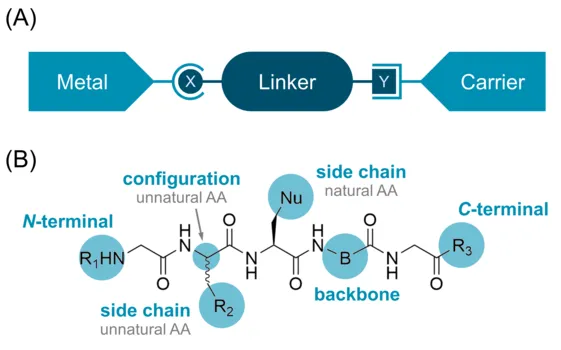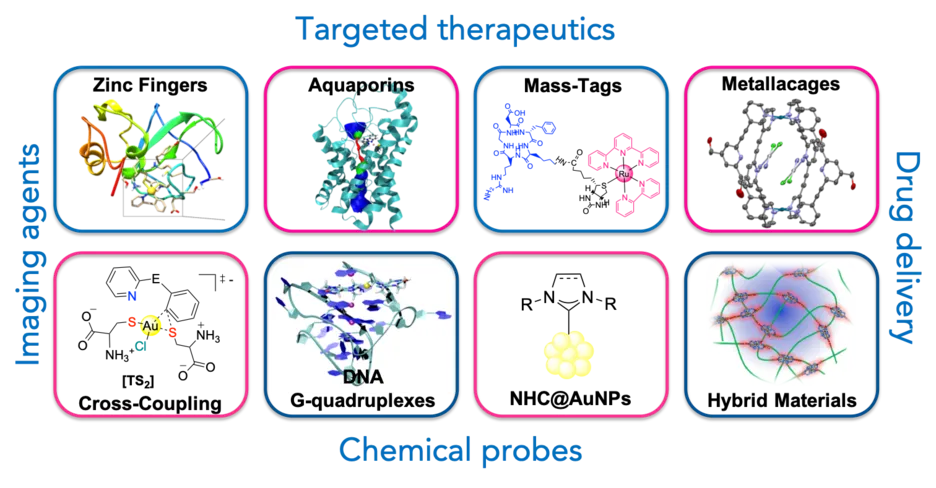Research Overview
Our research interests are in Medicinal Inorganic and Bioinorganic Chemistry. Specifically, the study of the role of metal ions in biological systems and of the mechanisms of action of metal-based anticancer agents are active topics of our research program. Besides synthetic inorganic chemistry and structural characterization of new metal complexes, our group strongly focuses on an intensive biological evaluation of the new compounds as possible therapeutic and imaging agents, and on the investigation of their mode of action via biophysical and analytical techniques coupled to pharmacological methods. The pursuit of new concepts in drug design, while bridging the gap between basic research and clinical applications, is our aim. Furthermore, novel applications for metal-based molecules and materials, including supramolecular coordination complexes, are explored in various domains of chemical biology, bioanalytical chemistry, radiochemistry, drug delivery and regenerative medicine. Recently, the use of both organometallic and supramolecular strategies have been successfully applied to the design of targeted unconventional radiopharmaceuticals for therapy and imaging. Overall, we thrive to broaden the scope of classical bioinorganic chemistry using knowledge of organometallic catalysis and supramolecular chemistry, as well as addressing topics of material science directed towards biomedical applications.
1 - Organometallic Catalysis in Cells
- Several studies have proven that metal-based compounds can be used to develop new drugs, diagnostic agents, as well as chemical probes to study the molecular mechanisms of diseases. In this context, when able to perform reactions in aqueous environment, small metal complexes can be viewed but also as catalysts of bio-orthogonal reactions in cells, leading to novel applications in catalysis and medicine. For example, catalytic metallodrugs could achieve high efficiency at low dosages and overcome cancer cells resistance through novel modes of actions. In recent years, an increasing number of reports has appeared demonstrating that organometallic catalysts can operate under biological conditions, and even in living cells. In addition to redox processes, the chemistry of transition metal complexes has been rapidly expanding to other types of transformations in living conditions, including cross-coupling reactions, transfer hydrogenation (TH), cycloadditions, as well as functional group deprotection (uncaging) reactions.
- In our group we focus on cyclometallated Au(III) complexes able to template cross-coupling (C-S or C-Se) reactions with target proteins in biological environment, and more recently on Ru(II) mono-carbonyl complexes to catalyse TH of NAD+/NADH in cells.
- The integration of the gold chemistry into a proteolysis targeting chimera (PROTAC) concept is also ongoing.
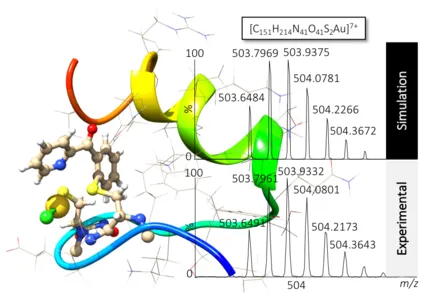
2 - Supramolecular Metallacages for Drug Delivery and as Theranostic Platforms
- Supramolecular coordination complexes (SCCs), assembled by the coordination of metal ions and organic links, are advancing new frontiers in science due to their design flexibility, which enhances the resulting unique properties enabling diverse applications in chemical separation, catalysis, and sensing.In this context, ring- and cage-like supramolecules have increasingly attracted attention in the field of cancer research, either as cytotoxic drugs or as drug delivery vehicles as well as probes for molecular imaging. These structures allow for a highly modular design and tunable component functionality, and together with their host guest chemistry, constitute an ideal platform for the development of new generation multifunctional theranostic agents.
- Our group focuses on the design of self-assembled metallacages of general formula MxLy (M = metal ion, L = ligand) as drug delivery systems for anticancer compounds or (radio-)imaging agents. Thus, we explore different strategies to tether metallacages to biomolecules, including peptides, as targeting moieties. The assessment of the cages’ stability and toxicity in biological environments proceeds in parallel to their chemical design.
- Here, the emerging field of supramolecular radio-theranostics is in our focus, in which the classical radiopharmaceutical design is revisited and implemented by supramolecular strategies. In this area, we plan to apply SCCs as platforms for multimodal imaging and (radio-)theranostic agents. This topic has recently received the support of the European Union via the award of an EIC Pathfinder Open project (starting 01/01/2024).
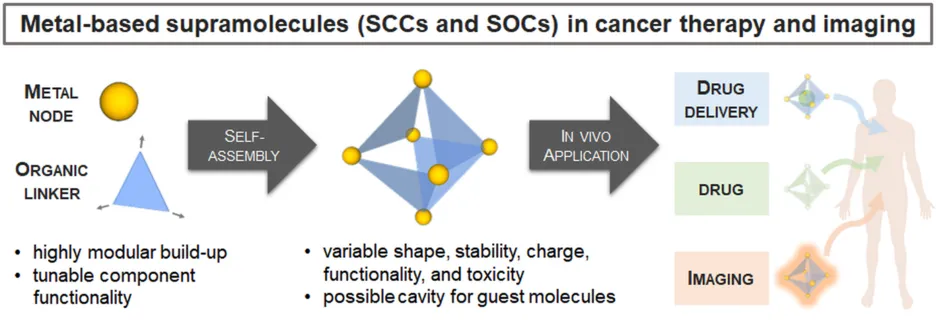
3 - Gold N-heterocyclic carbene complexes as DNA binders
The rational design of gold compounds as stabilizers of G-quadruplexes (G4s) is attempted with possible applications as anticancer agents. G-quadruplexes are peculiar secondary DNA architectures adopted by guanine-rich nucleic acid sequences, which have shown promise as anticancer drug targets. Our pioneering results in this area have shown that organometallic Au(I) NHCs compounds with caffeine-derived ligands can stabilize G4 structures potently and selectively with respect to classical duplex DNA. Thus, the proposed project is aimed at optimizing the design of gold compounds with enhanced G4 stabilizing properties, and increased selectivity.
4 - NHC@AuNPs for applications in Catalysis and Medicine
The unique properties and high synthetic flexibility of N-heterocyclic carbenes (NHCs) have made them highly attractive tools for the development of new nanomaterials and the fundamental study of their properties. In this context, the case of NHC-stabilized gold nanoparticles (NHC@AuNPs) with potential for biological applications is particularly attractive. AuNPs are ubiquitous in biomedicine, where they serve as versatile scaffolds for drug/gene delivery, biosensing, imaging and therapy.
• Here, the synthesis and characterization of NHC@AuNPs, with emphasis on strategies to achieve water-soluble biocompatible nanoparticles, is an emerging topic in our group. Recently, we have reported on the synthesis via a “bottom-up” approach of two NP systems stabilized by hydrophilic mono- and bidentate NHC ligands, with their characterization by various spectroscopic and analytical methods (Chem. Eur. J. 2022, e202201575). The new NPs were studied for their catalytic activity towards the reduction of nitrophenol substrates, the reduction of resazurin and for their photothermal efficiency. These reactions are important model reactions to prove the potential of NHC@AuNPs towards wastewater remediation and bioorthogonal transformations in cells. Moreover, initial results on the NPs application in photothermal therapy (PTT) were obtained in human cancer cells in vitro.
• Further studies are ongoing to optimize the properties of the NHC@AuNPs, such as bioconjugation to targeting peptides or to block copolymers. In the radiochemistry domain these NPs could be useful for their ability to carry multiple medically relevant radionuclides. The latter feature broadens their use to nuclear medicine imaging as well as for targeted radionuclide therapy.
5 - Metal compounds as photocleavable mass-tags to enable Mass Spectrometry Imaging (MSI)
The use of metal compounds as possible tools to enhance resolution in mass spectrometry imaging techniques is another recent area of interest in our group which includes the synthesis and bio-conjugation of different families of transition metal compounds to peptides/antibodies to implement MSI in complex biological samples (e.g. cancer tissues).
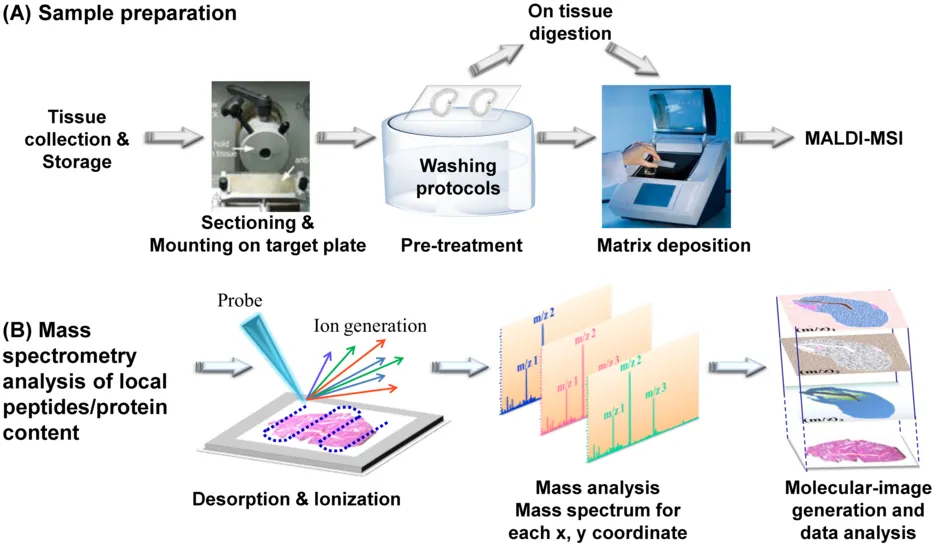
6 - Metal-based linkers to achieve targeted therapeutic agents
A main aim of this project is to tether a drug to targeting moiety (e.g. antibody) via a metal-based linker to guarantee selective drug release at the target site (e.g. cancer cells/tissues). It is essential that the linker does not interfere with the chemical and biological properties of the drug and of the targeting group, respectively.
